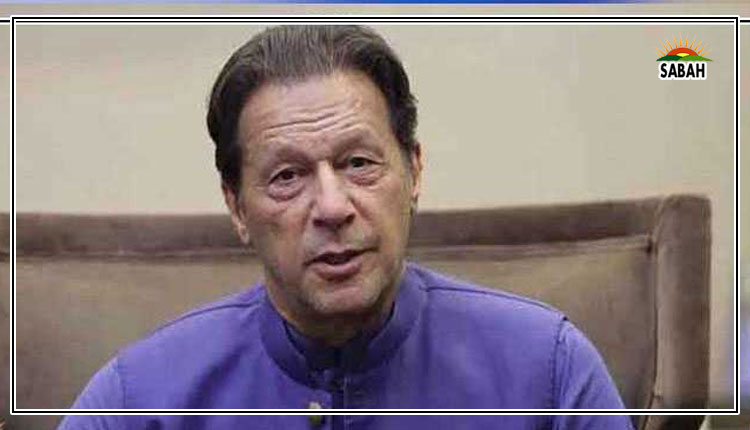The changing nature of war and Pakistan… Inam Ul Haque
It was in December 2021 that I wrote a piece titled ‘Future of Warfare’ published here, sequel to a series of write-ups on warfare that covered the technical, technological and theoretical aspects of warfare.
Discussion included the shift of traditional construct of warfare broadly from ‘Limited’ to ‘Total’ to ‘Full Spectrum’ warfare. ‘Full Spectrum’ conflict being limited and/or full employment of all “hybrid” capabilities – including non-traditional tools like networks (including social media – SMNs), media in all forms, electronic and digital tools, space and nuclear leverages, etc – in symmetric and/or asymmetric military, perceptual, virtual and societal domains, etc.
This discussion concluded that: a) waging war today may seem “easier” as distant killing by remote-controlled machines (killer robots, drones, etc), in a more abstract combat, makes violence more tolerable and palatable, hence more likely. We are seeing this in Gaza; b) uneven technological innovation among states may cause misperceptions about adversary’s military capabilities (and actual balance of power), leading to miscalculations.
Such misperceptions and potential miscalculations might increase fear, uncertainty and risk. This is especially true for the nuclear domain; c) autonomous, AI-driven machines might run amok at some stage. Human casualties – in a US Army wargame – caused machines to escalate in unexpected ways that humans couldn’t control; d) greater investment by private sector in AI-specific R&D has weakened state control of talent. T
he entailing price reduction has caused proliferation of these dual-purpose technologies in surveillance, drones, encryption, AI and genomics, accessible to unwanted, state and non-state actors; e) social media-savvy Millennials and Generation Z under the globe-sweeping currents of ‘populism’ are defending citizenry against state control, upending the national security paradigms; f) cyber-crime in the technology-rich environment under hacker-soldiers is becoming ubiquitous threat to states, multinational companies and even influential individuals; g) given that there is no agreed code of conduct for conflict over the ‘four global commons’ (outer space, high seas, atmosphere and Antarctica), the potential conflict may be unregulated, hence may spin out of control.
The nom-de-gore assigned to the prevalent mode of warfare is “Hybrid Warfare”. It loosely means the application of military and non-military force (especially media including SMNs, IT, espionage, surveillance, propaganda and perception management, etc) to target military and non-military components of an adversary. In relational terms, war in Europe and the broader Sino-Russia-Iran-North Korea versus the US comflict (competition plus conflict) has and would hamper global economic potential, gravitating the global economic order towards Asia, which has remained relatively unscathed during the Corona pandemic and the ravages of recent wars.
States monopoly over violence will weaken, due to outsourcing of war to public-private enterprise, and cheaper availability of tools of warfare to non-state actors and proxy forces. As a consequence, the less capable, weak and less sophisticated global south and other actors would resort to asymmetric capabilities, employing what is called the “gray-zone tactics” – using incremental aggression, information warfare, proxy forces and covert special operations, without tripping adversary’s large-scale conventional response. Large scale wars between conventional armies, as we have known, may phase out.
Environmentally, rising temperatures would negatively affect health, economic productivity and basing of military forces, necessitating stand-off application of military force, as preferred option. Water scarcity, greater urbanization and weather-induced migrations would enhance violence. Such war fighting requires substantial security resources. Mega cities complicate differentiating military and civilian targets, particularly for air power and other stand-off weapons. The widespread destruction in the Middle East by the Israeli Air power and other stand-off munitions is incidental as well as intentional.
“Foreign Subversion”, involving non-state actors targeting states, creating ungoverned spaces to enhance bargaining leverage for the sponsor would proliferate, as the preferred norm. Russian subversion of Ukraine and Georgia, Pakistani subversion of Afghan state, TTP subversion of Pakistan and Iranian subversion in Iraq, Yemen, Syria and Saudi Arabia are cases in point.
The emergence of “Virtual Societal Warfare” enabled by advanced IT/SMNs, morphing into cyber-aggression, in order to manipulate and disrupt economic and social order has and would increase in scope. Non-attributable misinformation and disinformation and fake content these days is a harbinger of things expected.
“Battlefield Swarming” using low-cost technological tools would possibly address the asymmetry between belligerents to some extent, as cited earlier. Iran’s response to Israel more recently is an example. The emerging technologies – robotics, AI, unmanned systems, data manipulation and networking, etc – would need compatible military policies, doctrine, operational strategy, training and force-development strategy.
AI is one such disruptive technologies with no state monopolising its access. Cyberspace is beginning to become the primary arena of espionage with more data digitisation and cloud-based storage. There is already talk about possible deployment of space-based weapons including nukes.
For Pakistan, the way to go is: 1) forming academic-industry centers of excellence jointly under Academia, JSHQ and SPD to develop organisational structures expandable into force structures; 2) explore and develop civil and military-grade AI; 3) build an outline space structure, translatable into space force; 4) deter and respond to virtual, societal and perceptual warfare; 5) continue technical collaboration with China/allied countries; and, 6) actively pursue legislation regarding global commons.
During the Sino-India stand-off in Aksai Chin in October 2022, this scribe maintained the near impossibility of a broader Sino-India war due to ‘difference in potential’. However, with Pakistan, India will continue its policy of attempted politico-military coercion, incremental operational/tactical escalation, economic strangulation and diplomatic legitimacy for its behaviour. India will continue to employ extensive perception-management tools like SMNs, deep and shallow fakes, AI-driven “social bots”, etc.
Our strategic conundrum of preparing for future war, and inability to completely break from conventional mode, under a challenged economic situation, can be resolved through a bold and aggressive nuclear policy. Through increased range, precision and stand-off in the air-delivered, sea-launched or even ground-based weapons, Pakistan can comfortably maintain a credible second-strike alternative-platform capability. Modi and his hysterical mob know no other language. It is now or never!.
COURTESY ![]()












